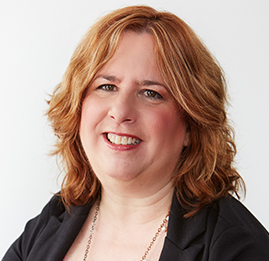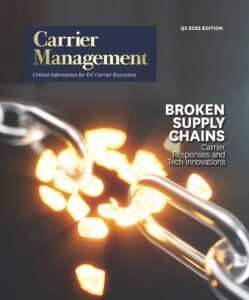A microchip shortage. Logistics industry backlogs. Supply and labor challenges. Worsening driver behavior. Social inflation.
These are just a few challenges the auto industry is currently grappling with, meaning claims will likely continue to be impacted and rates will continue to rise as auto insurers confront a hardening market, experts say.
Executive Summary
As the auto industry continues to grapple with many challenges such as supply and labor shortages, worsening driver behavior and social inflation, among others, experts say claims will likely continue to be impacted and rates will continue to rise as the market hardens. Experts in this article unpack the trends that are contributing to worsening claims severity and frequency, as well as what to expect in the auto insurance industry over the next few years.“I would not call this a soft market. It is a soft market in some geographies, but it’s a very hard market in others,” said Tim Zawacki, principal research analyst at S&P Global Market Intelligence. “I think the perception of softness will soon give way to the reality that carriers need to catch up to loss costs, and they’re going to do that through higher rates.”
This comes as many auto carriers are raising rates on the back of these disrupters, most of which Zawacki said will shake out later this year and into next year.
“I think we’ll see more rate increases coming,” he said. “As the year goes on and as 2023 unfolds, there are going to be a very substantial number in terms of both breadth and depth of filings for rate increases that are due to take effect—many of them in the third quarter of this year for renewal business. There are a lot of Americans who won’t see their first significant rate increase until maybe January or February of 2023, just based on when their policy renews and what state they’re in.”
 “As the year goes on and as 2023 unfolds, there are going to be a very substantial number in terms of both breadth and depth of filings for rate increases that are due to take effect.”
“As the year goes on and as 2023 unfolds, there are going to be a very substantial number in terms of both breadth and depth of filings for rate increases that are due to take effect.”
Tim Zawacki, S&P Global Market Intelligence
Allstate said it is raising auto insurance rates more due to continued upticks in physical damage and bodily injury severity, Insurance Journal previously reported.
The personal property insurer said in a statement on April 21 that first-quarter unfavorable non-catastrophe prior-year reserves re-estimates were about $160 million, reflecting the impact of “rapid increases in loss costs since the second quarter of 2021.”
“Given the ongoing loss-cost impacts of the current inflationary environment, Allstate has increased the magnitude of auto rate increases we expect to implement throughout 2022,” said Chief Financial Officer Mario Rizzo, in the statement.
Allstate announced in its second-quarter 2022 underwriting results that it implemented rate increases for auto insurance in June averaging 10.7 percent across eight locations, resulting in total Allstate brand insurance premium impact of 1.1 percent. Progressive also announced in its second-quarter investor call for 2022 an aggregate rate change of 2.2 percent in personal auto across 17 states, with the average rate change per state being 5.5 percent.
On the other hand, an S&P Global report said Amica Mutual Insurance Co. received approval for five rate cuts in March of this year which, when combined, could reduce the insurer’s premiums by $4.3 million. However, a spokesperson for the insurer said in a statement to Carrier Managementthat the carryover March rate decreases were originally filed in the second quarter of 2021 at a time when losses were continuing to reflect lower frequency trends.
“There has been a continuous increase in the magnitude of auto and home rate filings industrywide over the past several months,” the spokesperson said. “Consistent with the industry, Amica is generally increasing rates in most states to reflect recent trends. We continuously monitor trends and respond accordingly within individual markets.”
Claims Severity a Growing Challenge
Adam Pichon, vice president and general manager for personal lines insurance at LexisNexis Risk Solutions, said that the current rate environment is being driven by claims severity, noting that this is a departure from the slow rise in claims severities over time that is typically seen in a normal market.
 “Particularly in claims severity, you just can’t get behind the eight ball on that. You’ll never catch up.”
“Particularly in claims severity, you just can’t get behind the eight ball on that. You’ll never catch up.”
Adam Pichon, LexisNexis Risk Solutions
“Right now, we’re seeing huge double-digit increases in severity year over year, across multiple types of coverage,” he said, even as claims frequencies are primarily in line with historical patterns. “Claims frequencies aren’t nearly as big of a problem as we see on the severity side.”
Pichon noted that much of this is being furthered by aggressive driving behavior.
“Excess speeding seems to have gone up just in general across the market, and then you see lots of news articles about an increase in fatalities,” he said.
When drivers returned to the road after the pandemic, driving behavior and patterns changed for the worse, according to Amica’s spokesperson, leading to higher-severity accidents.
“The industry is observing higher-speed crashes, increased distraction, higher rates of impairment, increased fatality rates—especially with pedestrian-involved accidents—and lower rates of traffic policing, all of which has had a dramatic impact on both loss frequency and severity trends,” the spokesperson said.
Loretta Worters, vice president of media relations for the Insurance Information Institute, added that while insurers’ personal auto loss ratios fell briefly in 2020, they have since climbed steadily to exceed pre-pandemic levels. With more drivers on the road and replacement part costs continuing to climb, she added that this loss trend is expected to continue.
“The auto insurance line is inching back toward unprofitability as reckless driving trends that emerged with the pandemic have continued, along with cost trends that predated COVID-19,” she said. “Auto insurance profitability in 2020—a year with dramatically reduced numbers of cars on the road—was at its highest level since 2006. Auto insurance premium rates have not kept pace with general inflation, as measured by the Consumer Price Index, and have been far outstripped by inflation for auto replacement part costs. If the trends established before and during the pandemic continue, so will upward pressure on rates.”
 “Insurers will need to adapt to the hard insurance market, charging higher premiums, being more vigilant in their underwriting and perhaps increasing coverage restrictions.”
“Insurers will need to adapt to the hard insurance market, charging higher premiums, being more vigilant in their underwriting and perhaps increasing coverage restrictions.”
Loretta Worters, Insurance Information Institute
Zawacki added that while most carriers agree frequency has generally returned to pre-pandemic levels, severity has far exceeded its levels before the pandemic.
Whatever incremental benefit there may be from a slight decline or flat frequency relative to pre-pandemic is more than offset by the effects of a significantly higher severity,” he said.
Driving behavior isn’t the only thing impacting claims severity, though. The Amica spokesperson added that the logistics industry has also been backlogged.
“Ships couldn’t get into ports to unload their cargo, there weren’t enough workers to transition cargo, and there weren’t enough truckers to get materials to their final destination,” the spokesperson said.
These examples contributed to higher demand for used cars, which saw price increases substantially more dramatic than general CPI or broad market inflation indicators, the spokesperson said.
Indeed, Consumer Reports stated in a blog post on its website that used car prices are still more than 22 percent higher than last year, according to the May 2022 Consumer Price Index Report. It added that according to publicly available CPI numbers, current used-car prices are still more than 48 percent higher than they were in the first quarter of 2020, before the pandemic caused widespread closures and market disruptions.
“This has caused total loss claim severity to also rise significantly for auto insurance carriers,” the Amica spokesperson said.
Another concern is social inflation.
“Social inflation—the impact of rising litigation on insurers’ costs—increased claim payouts for commercial auto insurance liability alone by over $20 billion between 2010 and 2019,” Worters said.
Social inflation could include the proliferation of class action suits and other lawyer- and government-driven actions, often referred to as runaway litigation, as well as growing awards from sympathetic juries, or nuclear verdicts, according to Worters.
“Commercial transportation is among the sectors most severely affected by more frequent lawsuits generating higher insurance claim payouts,” she said, citing a 2020 study by the American Transportation Research Institute which found that, from 2010 to 2018, the size of jury verdict awards grew 51.7 percent annually as overall inflation grew 1.7 percent and healthcare costs grew 2.9 percent.
“We have seen carriers argue that they do believe social inflation is negatively impacting their business,” Zawacki said. “There is a greater share of accidents occurring that are more severe relative to pre-pandemic. As a result, those claims are more likely to be litigated.”
Supply Chain, Worker and Chip Shortages Persist
Beyond claims severity, supply chain issues and other factors are also increasing the amount of time it takes to process a claim, experts say.
“If you look at the auto manufacturing industry, after the chaos and disruption of the pandemic, sales and production of vehicles in the U.S. remain well below pre-COVID levels,” Worters said. “When factories shut down across the globe during the pandemic, inventories became low. Now, as demand returns to full speed, automakers and their intricate network of suppliers are straining to keep pace.”

Labor shortages have been adding fuel to the fire as well, Pichon said, as it can take much longer to repair vehicles.
“When you don’t have the labor supply to actually do those repairs, what happens?” he said. “The car sits there. Now, you’ve got somebody that’s in a rental car, the severities are going up, it costs more to hire workers to do the work. So, the job market is definitely impacting claims in that sense.”
If supply chain and labor shortages aren’t enough, chip shortages are also part of the equation, Worters said.
Microchips are used to manufacture everything from cars to robotic vacuum cleaners, Consumer Reports said in another blog on its website, adding that the auto manufacturing industry has been hard-hit as chip shortages have caused production slowdowns.
“Chip supplies were slim before the pandemic, but the shortage has been at a crisis since the global shutdown,” Worters said. “Without chips and other auto parts, it is creating a huge impact on the resolution of insurance claims.”
In fact, Pichon said he thinks this is the biggest piece of the puzzle creating a challenging claims environment for auto insurers.
“We think that the biggest piece is really the chip shortage,” he said. “It’s just affected the overall supply of vehicles, so demand has still been pretty high, but the supply just hasn’t kept up.”
But with all of this in mind, when can insurers expect that supply chain and chip shortages in the industry will start to resolve? Pichon says not for at least a year.
“What we hear from public sources, as well as conversations with folks in the auto industry, is that some folks think it recovers by mid-2023, so let’s call it nine to 12 months from now,” he said. “And we have some folks that think it could actually take until 2024 before dealer inventory is back to where it used to be pre-COVID.”
Worters said the one silver lining for both personal and commercial carriers has been rising interest rates, which can help improve investment returns.
“Insurers will need to adapt to the hard insurance market, charging higher premiums, being more vigilant in their underwriting and perhaps increasing coverage restrictions,” she said.
Pichon said his advice for carriers right now, although it could likely be exhausting, is to stay on top of the trends.
“Particularly in claims severity,” he said. “You just can’t get behind the eight ball on that. You’ll never catch up.”






















 AM Best Downgrades State Farm General Ratings
AM Best Downgrades State Farm General Ratings  Allstate’s Safe Driving App Helps Reduce Chance of Collision by 25%
Allstate’s Safe Driving App Helps Reduce Chance of Collision by 25%  If U.S. Inflation Reflected Rising Home Insurance Costs, It’d Be Even Higher
If U.S. Inflation Reflected Rising Home Insurance Costs, It’d Be Even Higher  Progressive Gains as Drivers Shop Around for Auto Insurance—Again
Progressive Gains as Drivers Shop Around for Auto Insurance—Again 



